Something went wrong!
Hang in there while we get back on track
Best attractions in Milan
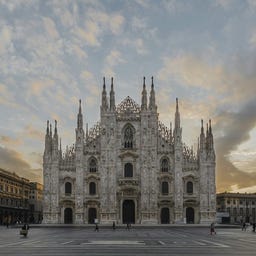
The Gothic Milan Cathedral is a true masterpiece and the city's most iconic landmark. With a construction period spanning nearly 600 years, from 1386 to 1965, it is even the largest cathedral in Italy. Be sure to visit the rooftop for stunning panoramic views over Milan — standing up there among the delicate sculptures is an incredible experience.
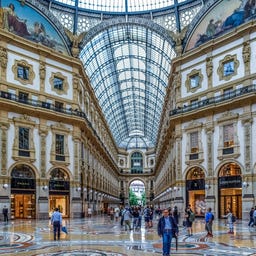
The Galleria Vittorio Emanuele II is Italy's oldest shopping gallery and a significant landmark in Milan. The magnificent glass roofs and mosaic floors make every visit an experience. Enjoy an espresso in one of the elegant cafes or shop in the luxury stores.

In the heart of Milan stands the mighty fortress from the 15th century. Once the seat of the powerful Sforza family, it now houses museums with valuable art treasures, including works by Michelangelo, Filippo Lippi, and Leonardo da Vinci. A walk through the courtyards and visiting the museums offers a fascinating insight into the Renaissance.
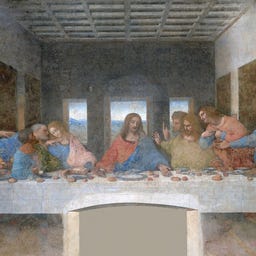
You’ll find Leonardo da Vinci's world-renowned painting "The Last Supper" at the Santa Maria delle Grazie Convent. The art work is located in the dining hall and depicts, in impressive detail, the moment Jesus reveals the betrayal that will lead to his death to his disciples. The expressive faces and masterful composition make it an unparalleled Renaissance masterpiece. It is the largest work of da Vinci, except the Sala delle Asse.

The Teatro alla Scala is a temple of opera, where the greatest masterpieces of music history have been performed since 1778. Its magnificent neoclassical facade and opulent interior with red velvet seats are impressive. As one of the world's finest opera and ballet theaters, La Scala has hosted and thrilled the best singers and artists from around the globe. Experiencing a performance here is an unforgettable event.
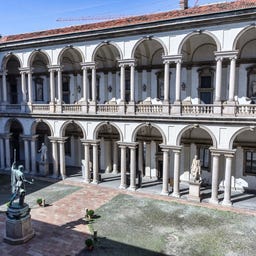
The Pinacoteca di Brera is a world-class art museum housing an impressive collection of Italian masterpieces from the 13th to the 20th century. Works by Caravaggio, Raphael, and Bellini fill its splendid halls. The historic building and surrounding gardens invite a relaxing stroll.
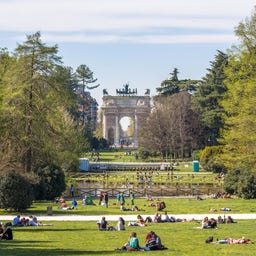
Parco Sempione, Milan’s green heart, is the ideal escape from the city's hustle. Adjacent to Castello Sforzesco, a walk through the park reveals historic landmarks like the grand Arco della Pace, commemorating Napoleon's victories.
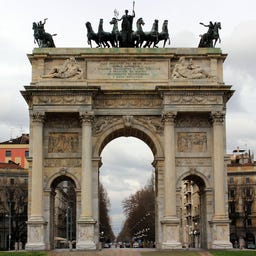
The majestic Arco della Pace at the entrance of Corso Sempione is one of Milan's most significant neoclassical monuments. This 25-meter-high triumphal arch, whose construction began in 1807 under Napoleon and was completed in 1838 during Austrian rule, is an impressive structure made of granite, topped with bronze sculptures of the goddess of peace with a six-horse chariot.
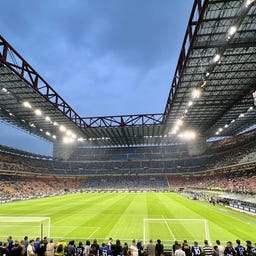
San Siro Stadium, also known as Stadio Giuseppe Meazza, is a legendary football arena in western Milan. With 80,018 seats, it's the largest stadium in Italy and home to both AC Milan and Inter Milan. Since opening in 1926, it has hosted numerous iconic football moments, including World Cup and Champions League finals. Visitors can take guided tours that offer a behind-the-scenes look at the locker rooms, players' tunnel, and pitch.
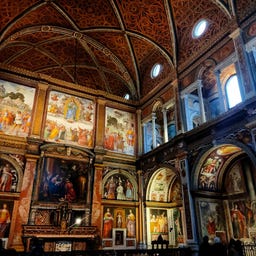
The Chiesa di San Maurizio al Monastero Maggiore is considered the "Sistine Chapel" of Milan - and rightly so: here you will find one of the best-preserved fresco cycles in Lombardy from the 16th century, mostly created by Bernardino Luini and his family.
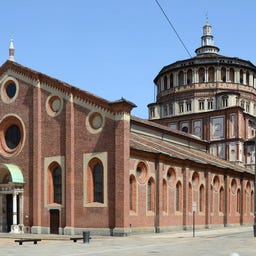
In the Chiesa di Santa Maria delle Grazie, an impressive building from the 15th century, Gothic and Renaissance elements blend into a harmonious whole. The church, commissioned by Ludovico il Moro as a family mausoleum, houses the world-famous mural "The Last Supper" by Leonardo da Vinci in its refectory.
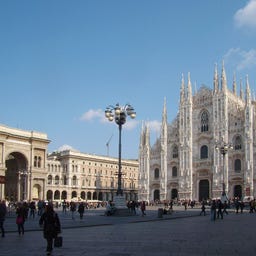
At the Piazza del Duomo, the vibrant heart of Milan, the majestic Gothic facade of the Duomo di Milano rises impressively. Covering 47,200 square meters, this is one of the largest squares in Italy, established as a marketplace in the 14th century by Azzone Visconti and shaped into its current form by architect Giuseppe Mengoni between 1865 and 1873.
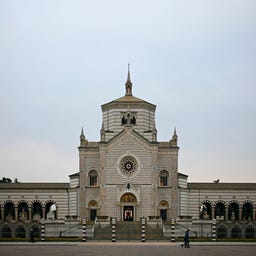
On 250,000 square meters, you will find the Cimitero Monumentale, one of the most significant historical cemeteries in Italy, which has grown into a unique open-air museum of tombstone art since its opening in 1867.
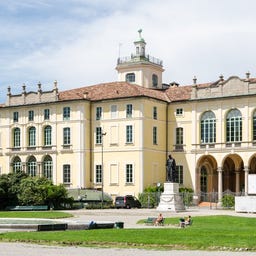
In Milan's oldest public park, you will find a green oasis covering 172,000 m², filled with magnificent cedars, magnolias, and ginkgo trees. Opened in 1784 and named after the journalist Indro Montanelli, the park is home to three significant buildings: the 17th-century Palazzo Dugnani, the Natural History Museum, and the Ulrico Hoepli Planetarium.
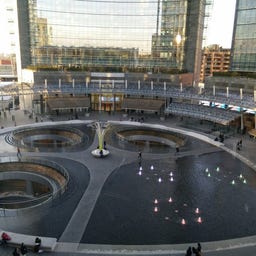
On the circular piazza Gae Aulenti, elevated six meters above the ground, you’ll find one of the most modern squares in Milan, featuring three impressive water fountains that come to life in the evenings with light and music effects. Designed by the Argentine architect César Pelli, this square is the centerpiece of the bustling Porta Nuova district and is overshadowed by Italy's tallest skyscraper, the 231-meter-high UniCredit Tower. From here, you can enjoy a spectacular view of the Milan skyline, including the Torre Garibaldi and the green Bosco Verticale, while the square fills with a vibrant mix of locals and visitors, especially on warm summer evenings.

In three elegant historical palaces in the center of Milan, you will find the Gallerie d'Italia, an impressive art collection dedicated to Italian art from the 19th and 20th centuries.

The Basilica Sant'Ambrogio is one of the most important churches in Milan, founded in the 4th century by Saint Ambrose as the Basilica Martyrum. In its current Romanesque form from the late 11th century, it impresses with two distinctive bell towers and an intricate blend of brick, stone, and white plaster.

In the thriving Milanese district of Isola, the two green residential towers of Bosco Verticale rise up, shaping the cityscape since 2014. Designed by Stefano Boeri, these skyscrapers not only house 131 apartments but also over 2,000 different plant species that envelop the facades like a vertical forest.
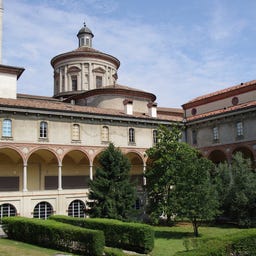
In a former Benedictine monastery from the 19th century, you will find Italy's largest science and technology museum, which has been making science and technology accessible since 1953. The Museo Nazionale Scienza e Tecnologia Leonardo da Vinci houses not only the world's most extensive collection of models based on da Vinci's designs across 50,000 m², but also 19,000 historical exhibits related to Italian industrial and technological history.
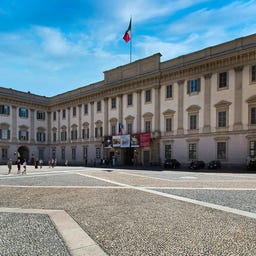
Right at the Milan Cathedral, you will find the Palazzo Reale, which served as the seat of government and power center of the city for centuries. The originally medieval building was transformed in the late 18th century by Giuseppe Piermarini in a neoclassical style and even housed the viceroy of the Napoleonic Kingdom of Italy.

In the small Chiesa di Santa Maria presso San Satiro, you will encounter one of the most fascinating optical illusions of the Italian Renaissance: the "false choir" created by Donato Bramante is a masterpiece of perspective painting that creates an impressive sense of spatial depth.
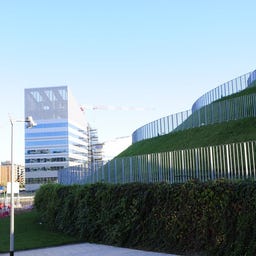
At the modern headquarters of AC Milan, the Casa Milan, you will find a fascinating blend of football history and contemporary architecture. The building, opened in 2014 and designed by Studio Valle, houses not only the club offices but also an exciting museum with a trophy collection, a fan shop, and a bistro.
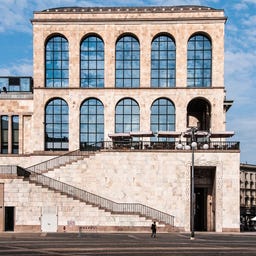
In the elegant Palazzo dell'Arengario right by the Piazza del Duomo, you will find an impressive collection of 20th-century Italian art featuring works by Umberto Boccioni, Amedeo Modigliani, and Lucio Fontana.
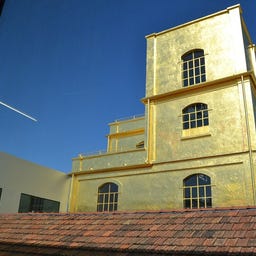
In a former gin distillery in the south of Milan, the Fondazione Prada has been unfolding since 2015 as a fascinating center for contemporary art, cinema, and culture. Founded by Miuccia Prada and Patrizio Bertelli, the complex brings together seven historic and three modern buildings, including the 60-meter high Torre tower—all designed by the renowned architect Rem Koolhaas.

In the elegant Villa Necchi Campiglio from the 1930s, you experience a perfectly preserved example of Italian Rationalist architecture with Art Deco elements, designed by the renowned architect Piero Portaluppi.
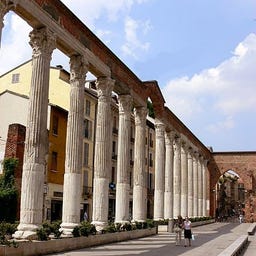
In front of the impressive Basilica di San Lorenzo, the Colonne di San Lorenzo rise - sixteen ancient marble columns that are among the few remaining witnesses of Roman Milan. These columns, about 7.5 meters high with their Corinthian capitals, originally date back to the 2nd or 3rd century and were likely moved here from a Roman temple.
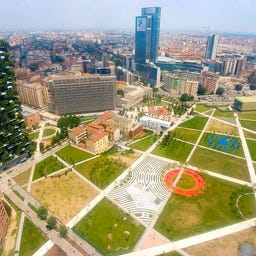
In the heart of Milan, the Parco Biblioteca degli Alberi, which opened in 2018, stretches over an impressive 9 hectares, making it the third-largest green space in the city center, located between Piazza Gae Aulenti and the Isola district. Designed by Petra Blaisse and Piet Oudolf, the park resembles a vibrant plant library with over 100 different species, 500 circularly arranged trees, and 135,000 plants.
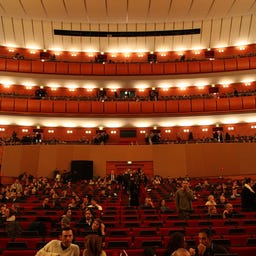
The most modern theater in Milan was built between 1997 and 2002 based on designs by Vittorio Gregotti and boasts an impressive capacity of 2,346 seats. This grand building served as a temporary home for performances of the Teatro alla Scala during its renovation from 2002 to 2004 - no surprise, as the stage dimensions were precisely modeled after the famous opera house.

In the Chiesa di San Bernardino alle Ossa, you will find one of the most unusual churches in Milan: a baroque chapel whose walls are intricately decorated with human bones. Originally built in the 13th century, the church was given its current octagonal shape with a dome after a fire in 1712 and houses remarkable artworks, including a ceiling fresco by Sebastiano Ricci from 1695.
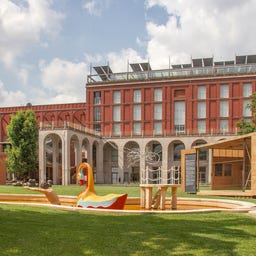
In the impressive Palazzo dell'Arte, you will find the Triennale Milano, one of the city's most important cultural centers, which has been hosting international exhibitions on design, art, and architecture since 1933. Here, you can explore not only the first museum dedicated to Italian design but also a vibrant program of theater performances, concerts, and art exhibitions.
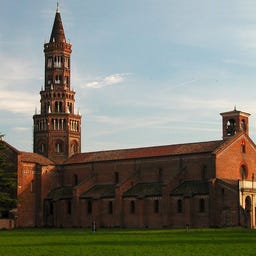
As one of the earliest examples of Gothic architecture in Italy, the Abbazia di Chiaravalle rises in the midst of the Parco Agricolo Sud Milano. Founded in the 12th century by Bernard of Clairvaux, this Cistercian abbey impresses with its Romanesque-Gothic architecture, magnificent frescoes by the Fiammenghini, and an intricately carved wooden choir from the 17th century. The monastery is also known for its distinctive bell tower "Ciribiciaccola," which houses the oldest bell of the Ambrosian system. After a tumultuous history, Cistercian monks have been living here again since 1952, taking care of the monastery to this day - and according to legend, the first Grana Padano cheese was created here in 1135.
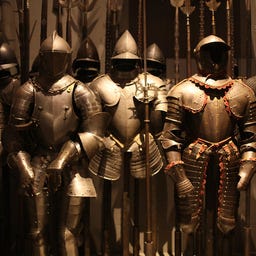
In the elegant Palazzo Moriggia Della Porta on Via Manzoni, you will discover one of Milan's most fascinating private museums, which Gian Giacomo Poldi Pezzoli bequeathed to the public in 1871. In the stylishly designed rooms that reflect eras from the Baroque to the Renaissance, you can expect an exquisite art collection featuring works by Botticelli, Perugino, and Giovanni Bellini. The museum, just a few steps from the Teatro alla Scala, survived the bomb damage of World War II and has been shining in new glory since 1951. In addition to significant paintings like Botticelli's "Madonna del Libro," the house also houses impressive collections of historical weapons, textiles, and crafts.
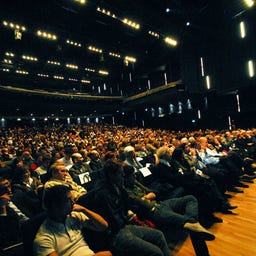
The Teatro Nazionale in Milan is one of the most important musical theaters in Italy, having experienced a dynamic history of both theater and cinema since its opening in 1924. With its 1,500 seats and an orchestra pit, it now follows the Broadway model, showcasing one musical production per season.
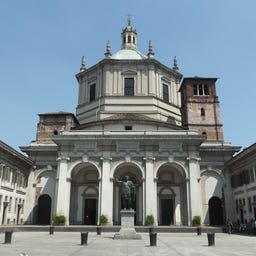
The Basilica di San Lorenzo is one of the oldest and most significant churches in Milan, with origins dating back to the late 4th century. As the first centrally symmetrical church in Western Christianity, it impresses with its unique octagonal layout featuring four apses and ancient Roman columns, known as the Colonne di San Lorenzo.
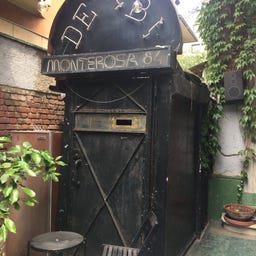
The Derby Club in Milan evolved from a simple restaurant into one of the most important music and cabaret clubs in Italy during the 20th century. Opened in 1959 by Gianni and Angela Bongiovanni on Via Monte Rosa, many later-famous Italian artists launched their careers there.

In a former industrial facility from the early 20th century, you will find HangarBicocca, one of the largest contemporary art centers in Milan. The impressive 15,000 square meters of exhibition space are divided into three distinctive areas - "Shed," "Navate," and "Cubo" - while the original industrial character is intentionally preserved with concrete floors and high ceilings.
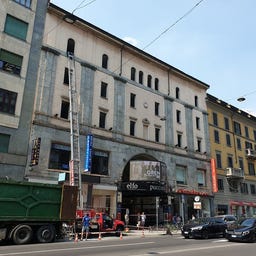
In the heart of Milan, the Elfo Puccini awaits you as a fascinating center for contemporary theater, rooted in the experimental cultural scene of the 1970s. What began as an alternative theater project by a group of actors around Gabriele Salvatores has evolved over the decades into one of the city's most important stages.

Beneath Milan's central train station, you will find the Memoriale della Shoah, a poignant memorial that documents the history of deportations during World War II. From here, the former Binario 21, hundreds of Jews and political prisoners were transported to concentration camps like Auschwitz between 1943 and 1945.
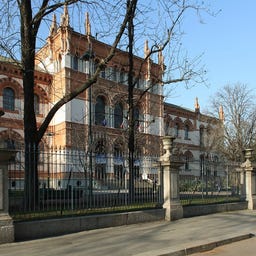
In the neo-Gothic building of the Giardini Pubblici, you will find one of the most significant natural history museums in Europe, featuring nearly three million exhibits. The impressive structure, designed by architect Giovanni Ceruti in the late 19th century, is considered the first building in Italy specifically designed as a museum.
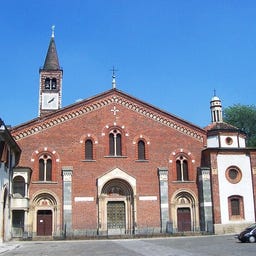
In the Basilica di Sant'Eustorgio, one of the oldest churches in Milan from the 4th century, the complete relics of the Three Wise Men were once kept until Frederick Barbarossa had them transferred to Cologne in 1162. The 75-meter-high bell tower is topped with a symbolic star that recalls the guiding star of the Three Wise Men.
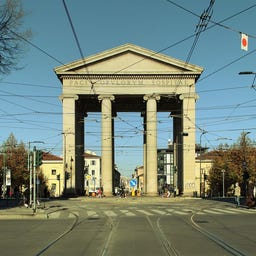
The majestic Porta Ticinese is one of the six historic main gates of Milan and now stands in the center of Piazza XXIV Maggio. This neoclassical gate was built between 1802 and 1814 by architect Luigi Cagnola and is located on the site of an earlier Roman and medieval city gate.
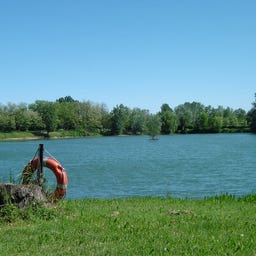
In the third largest park in Milan, you’ll find a unique blend of nature and history spread over 135 hectares: the Parco delle Cave was created from former gravel pits from the early 20th century, which transformed into four picturesque lakes after they were closed in the 1960s.
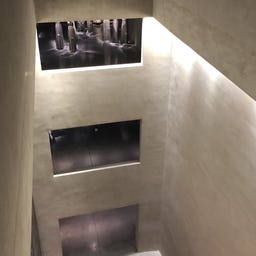
In a former grain silo from the 1950s, the Armani Silos has been showcasing the life’s work of fashion designer Giorgio Armani since 2015. The building's distinctive honeycomb structure has been preserved during its transformation into a museum, while inside, you can explore an impressive collection of 600 garments and 200 accessories spread across three levels.
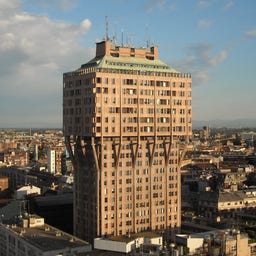
As a striking symbol of post-war modernism, the Torre Velasca has been towering over the Milan skyline since 1957 with its distinctive silhouette. The 28-story tower impresses with its unique brutalist-postmodern architecture, where slanted supports hold up the overhanging upper part of the building—an allusion to the medieval architecture of Lombardy.
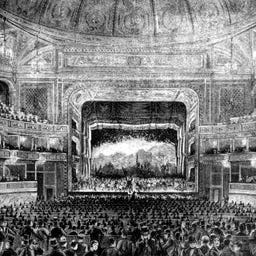
In the historic Teatro Dal Verme in Milan, you can experience classical concerts, jazz, and rock in an impressive horseshoe-shaped auditorium with over 1,400 seats. Opened in 1872, this cultural gem was the site of significant premieres, including works by Giacomo Puccini and Franz Lehár, before being destroyed by bombs in 1943 and later reopened as a cinema.

Since 2015, the MUDEC has been waiting for you in the former Ansaldo steelworks, a fascinating museum of world culture designed by British architect David Chipperfield. Spanning 17,000 square meters, the museum showcases over 9,000 artworks and artifacts from all continents, documenting the diversity of human cultures.
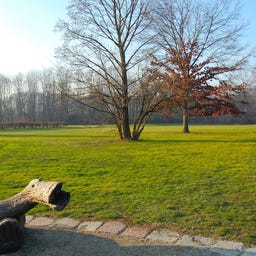
In the west of Milan, you'll find Boscoincittà, a 110-hectare city park that has been open to the public since 1974, inviting you to explore its forests, clearings, and a small lake.
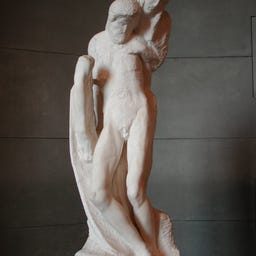
At the Castello Sforzesco in Milan, you will find the Pietà Rondanini, the last work of the Renaissance master Michelangelo, which he worked on until his death in 1564. This 195 cm tall marble sculpture, originally created for his own tomb, depicts Mary and the dead Christ in a particularly moving, vertical embrace.

High above the magnificent Milan Cathedral stands the gilded copper statue of the Madonnina, which has been there since 1774. This 4.16-meter tall figure of Mary has become the city's most important landmark. Created by Giuseppe Perego, the statue is not only a religious symbol but also shapes the city's skyline: according to a law from the 1930s, no building in Milan can be taller than the Madonnina.
At the historic Milan cabaret theater Area Zelig Cabaret, you can enjoy top-notch comedy shows five times a week since 1986, ranging from stand-up to circus acts. Named after a Woody Allen film, this stage has become the leading talent incubator in the Italian comedy scene, helping stars like Paolo Rossi, Claudio Bisio, and the trio Aldo Giovanni e Giacomo achieve fame. Under the artistic direction of Luigi Vignali and Michele Mozzati, the theater located at Viale Monza 140 continues to captivate audiences with its diverse program, which was even broadcast as a TV show "Zelig - Facciamo cabaret" from 1997 to 2003.
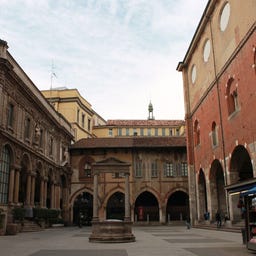
In the heart of Milan's historic center, you discover the Piazza Mercanti, which was established in the 13th century as the hub of urban life. The once rectangular square is lined with significant historical buildings, including the Palazzo della Ragione from 1233 and the Gothic Casa dei Panigarola from the 15th century.
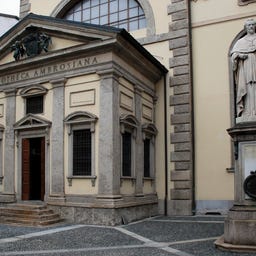
In the Biblioteca Ambrosiana, founded by Cardinal Federico Borromeo in the early 17th century, you will find one of the most significant historical libraries in Italy, with around a million books and 10,000 valuable early prints. The magnificent reading room, Sala Federiciana, with its vaulted ceiling and stucco decorations, is the centerpiece of the complex, which also houses an impressive art gallery. In the Pinacoteca, you can admire masterpieces by Leonardo da Vinci, Caravaggio, Raphael, and Titian, while in the basement, you can discover remnants of the ancient Roman Forum. Even Galileo Galilei praised this institution as a "heroic and immortal library" - a reputation it has maintained to this day.

Piazzale Loreto is today one of the most important traffic hubs in Milan, where several major roads, including Corso Buenos Aires, intersect. Named after the church Santa Maria di Loreto, the square became the site of dramatic events during World War II: in 1944, fifteen partisans were executed by the fascists here, and in April 1945, the bodies of Benito Mussolini and other fascist leaders were displayed.
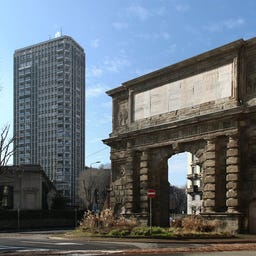
The Porta Romana, one of the six historic main gates of Milan, has stood proudly in the center of Piazza Medaglie d'Oro since 1596. This impressive Doric arch was built in honor of Margherita d'Austria-Stiria, the fiancée of Philip III of Spain, and was part of the Spanish city wall from the 16th century.

In the magnificent Villa Reale, a neoclassical masterpiece from the late 18th century, you will find the most significant collection of Lombard art from the 19th century.
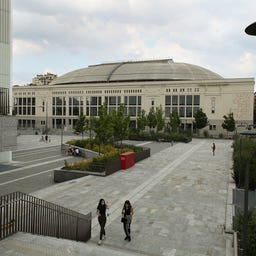
In the heart of the modern CityLife complex in Milan stands the Palazzo delle Scintille, an impressive Liberty-style building designed by architect Paolo Vietti-Violi, featuring a distinctive glass dome. Opened in 1923 as Milan's first indoor sports arena, the building has hosted historic events throughout its history—from Italy's first boxing world championship fight to serving as a temporary venue for the Scala after World War II.
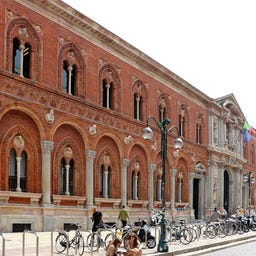
The Ca' Granda, one of the first Renaissance buildings in Milan, was built in the mid-15th century under Duke Francesco Sforza as a hospital and has significantly influenced the architecture of Northern Italy with its impressive 300-meter-long facade.
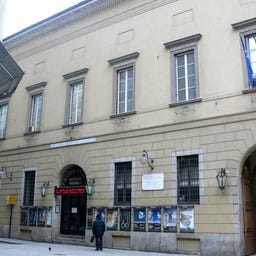
The Piccolo Teatro in Milan is Italy's first public repertory theater, founded in 1947 by Giorgio Strehler and Paolo Grassi as a cultural revival after World War II. With its three venues - Teatro Grassi, Teatro Studio, and the modern Teatro Strehler - it now accommodates over 1,700 spectators and was named "Teatro d'Europa" in 1991.
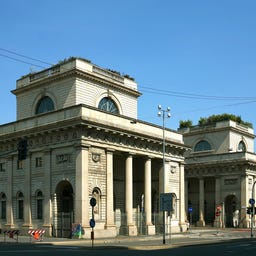
Porta Venezia is one of the six historic main gates of Milan and impresses with its neoclassical customs houses, designed by architect Rodolfo Vantini in the Doric style between 1827 and 1828.
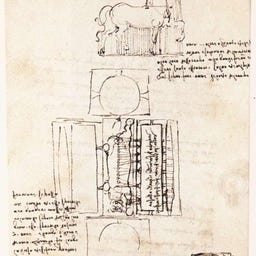
Before you stands the majestic Cavallo di Leonardo, a modern interpretation of Leonardo da Vinci's ambitious equestrian statue project from the 15th century. The original monument, intended for Francesco Sforza, was meant to be the largest equestrian statue in the world at over 7 meters tall, but it remained unfinished and was destroyed by French soldiers in 1499.
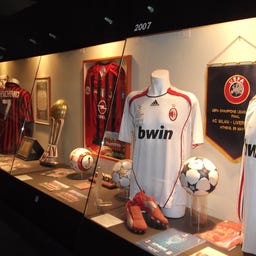
The San Siro Museum in Milan is a must-visit for every football fan. Situated within the iconic San Siro Stadium, one of the most famous football arenas in the world.
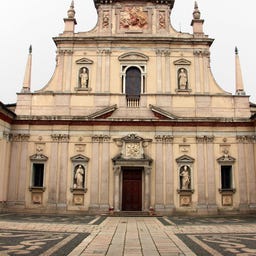
Northwest of Milan, you will discover the Certosa di Garegnano, a fascinating former Carthusian monastery from the 14th century that now serves as a parish church. Founded by Giovanni Visconti, this complex once hosted notable figures like Francesco Petrarca and Lord Byron, and it was largely redesigned in the late 16th century by architect Vincenzo Seregni.
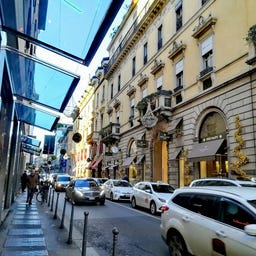
As part of the Quadrilatero d’Oro – Milan’s golden quadrilateral – Via Montenapoleone is an essential destination for luxury shopping in the city. Often considered to be the key shopping street in Milan, it is home to the biggest design brands, from Gucci to Prada to Valentino. With luxury brands including Bottega Veneta, Salvatore Ferragamo and Fendi all on the same street, Via Montenapoleone is an irresistible place to indulge in some luxury leather accessories from world-class Italian designers.
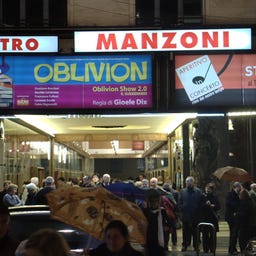
The Teatro Manzoni is one of the most traditional theaters in Milan and has a rich history that began in the late 19th century as the "Teatro Sociale." After being completely destroyed during World War II, it was rebuilt in 1950 at its current location on Via Manzoni, under the direction of architect Alziro Bergonzo.
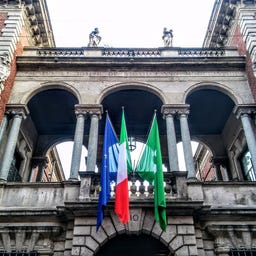
In the heart of Milan, you will find the Museo Bagatti Valsecchi, one of the best-preserved house museums in Europe. The brothers Fausto and Giuseppe Bagatti Valsecchi designed the palace in the late 19th century as a tribute to the noble palaces of the Renaissance, gathering an impressive collection of artworks from the 15th and 16th centuries.
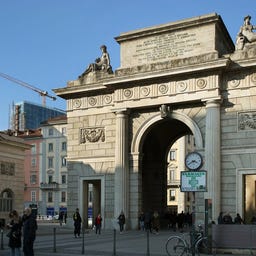
The impressive Porta Garibaldi is one of the six historic main gates of Milan and was built between 1826 and 1827 according to the plans of architect Giacomo Moraglia in the neoclassical style. The archway, flanked by two customs houses, is adorned with four colossal statues representing the major rivers of Lombardy.
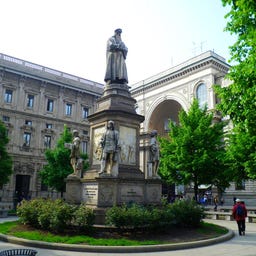
In the heart of Milan, the impressive monument honoring Leonardo da Vinci rises on the Piazza della Scala - a 7-meter-high ensemble made of white Carrara marble. Unveiled in 1872, this monumental group by sculptor Pietro Magni depicts the Renaissance master on an octagonal pedestal, surrounded by four life-sized statues of his students.
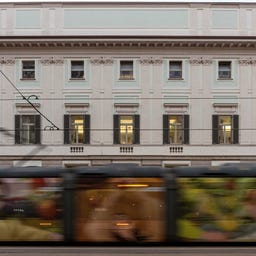
In the historic center of Milan, you will find the Teatro Lirico Giorgio Gaber, a traditional opera house with 1,450 seats that first opened in 1779 as the Teatro della Canobbiana. Here, Donizetti's famous opera "L'elisir d'amore" had its world premiere in 1832, and even Mussolini delivered his last public speech within these walls in 1944.
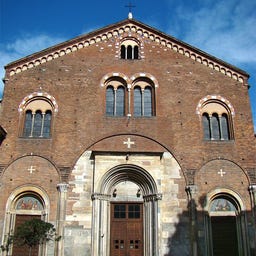
The Basilica di San Simpliciano is one of the four major Ambrosian basilicas in Milan and was built in the 4th century by Bishop Sant'Ambrogio. In this originally dedicated to the Virgin Mary structure, you will find an impressive mix of early Christian and Romanesque architectural elements, including three equally high naves with characteristic brick round columns.
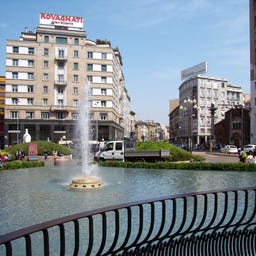
Piazza San Babila has transformed from a simple church square into one of the liveliest places in Milan, having undergone several redesigns since the 1920s. Here, you can find the first iconic skyscraper of Milan, the Torre Snia Viscosa from 1937, as well as the distinctive fountain designed by Luigi Caccia Dominioni from the 1990s.

In the middle of the Piazza del Duomo, the central square of Milan, stands the impressive equestrian statue of King Vittorio Emanuele II. Unveiled in 1896, the monument depicts the king on his horse, rallying his soldiers during the Battle of San Martino.
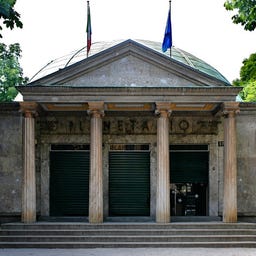
In the largest planetarium in Italy, you dive into a fascinating world of stars that has captivated visitors in the Milanese Giardini di Porta Venezia since 1930. The neoclassical building, designed by Piero Portaluppi, impresses with its grand dome and Ionic column entrance, while inside, a fourth-generation Zeiss projector brings the movements of celestial bodies to life on the 19.6-meter-wide projection surface.
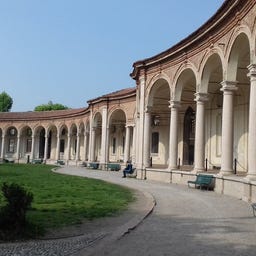
The Rotonda della Besana is a fascinating Baroque building from the early 18th century that originally served as a cemetery complex for the main hospital in Milan. The distinctive round structure features a wavy colonnade made of red brick, with the former cemetery church of San Michele and its characteristic octagonal dome rising at its center.
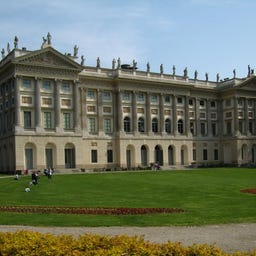
In the magnificent Villa Reale di Milano from the late 18th century, neoclassical architecture and a rich history come together to create a unique ensemble. The U-shaped building, designed by architect Leopoldo Pollack for Count Ludovico Barbiano di Belgiojoso, later served as a residence for Napoleon Bonaparte and his family.
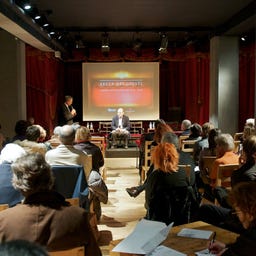
At the Teatro Franco Parenti, you experience one of Milan's most important cultural centers, founded in 1972 by Franco Parenti and Andrée Ruth Shammah as the Salone Pier Lombardo. The theater has three performance spaces with a total of 760 seats and impresses with its diverse program of contemporary plays, concerts, film screenings, and cultural events. After a comprehensive renovation between 2004 and 2007, the venue, which has carried the name of its late founder since 1989, shines anew. Under the artistic direction of Andrée Ruth Shammah, the theater has made a name for itself with innovative productions that often experiment with unconventional spatial concepts.
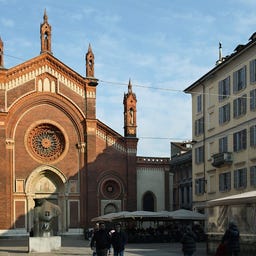
The Chiesa di Santa Maria del Carmine takes you on a journey through eight centuries of Milanese history, starting in 1268 with its founding by Carmelite monks near the Castello Sforzesco. The current church, built between 1339 and 1446 by Bernardo da Venezia and Pietro Antonio Solari, impresses with its magnificent 19th-century neo-Gothic facade featuring an imposing rose window and a Madonna mosaic.
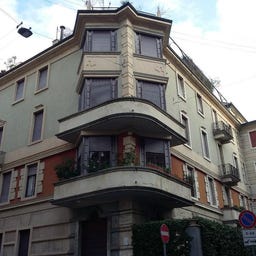
In this elegant Milanese residential building from the 1930s, you will find an extraordinary private collection featuring over 200 Italian artworks from the 20th century. The villa, designed by architect Piero Portaluppi, showcases distinctive Art Deco elements and houses the impressive collection of Antonio Boschi and Marieda Di Stefano, which they bequeathed to the city of Milan in 1973.
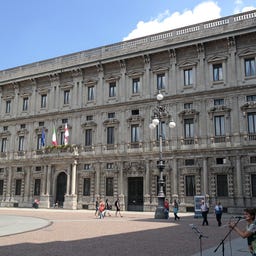
The Palazzo Marino at Milan's Piazza della Scala is one of the most significant examples of 16th-century architecture in the Lombard capital. Designed by Galeazzo Alessi between 1557 and 1563 for the banker Tommaso Marino, the palace impresses with its magnificent courtyard adorned with depictions of the "Labors of Hercules."
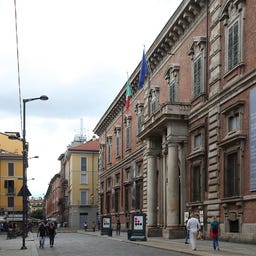
In the heart of Milan, the Palazzo di Brera awaits you as a fascinating testament to Italian cultural history, originally built as a Jesuit college in the 17th century. The brick building, designed by Francesco Maria Richini, now houses three significant institutions: the Pinacoteca di Brera, the Biblioteca Nazionale Braidense, and the Accademia di Belle Arti.
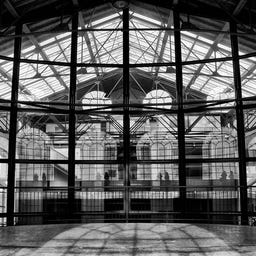
Near the Monumental Cemetery of Milan, you will discover the Fabbrica del Vapore, a former steam engine factory from the late 19th century. Founded in 1899 by Carminati & Toselli, this industrial building was originally used for the repair and sale of railway and tram materials until operations ceased in 1935.
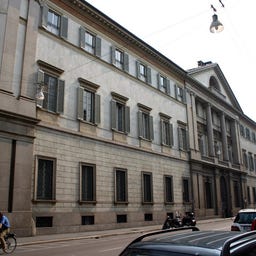
The neoclassical Palazzo Serbelloni is one of the first noble palaces on Corso Venezia and impresses with its striking loggia adorned with stucco reliefs depicting scenes from the life of Frederick Barbarossa. Designed by architect Simone Cantoni and completed in 1793, the palace was not only a meeting place for the Milanese Enlightenment but also hosted illustrious guests like Napoleon and later Vittorio Emanuele II.

In the green Parco Sempione, the 108.6-meter tall Torre Branca stands as one of the highest accessible observation towers in Milan. Designed by Gio Ponti, this steel tower with a hexagonal base was built in just 68 days for the V. Triennale in 1933 and features a modern elevator that takes you to a spectacular viewing platform in less than a minute.
In a former workshop from 1946, you can find one of Milan's most important venues today: the Alcatraz. This cultural center, opened in 1998 by Roberto Citterio and Enrico Rovelli, is located at Via Valtellina 25 and offers over 3,000 square meters of space for up to 3,000 visitors.

In the Museo teatrale alla Scala in Milan, you dive deep into the fascinating world of opera and theater. Opened in 1913, the museum features an impressive collection of paintings, stage designs, and historical musical instruments across fourteen exhibition rooms, including a Steinway piano by Franz Liszt and a precious virginal from the 17th century.
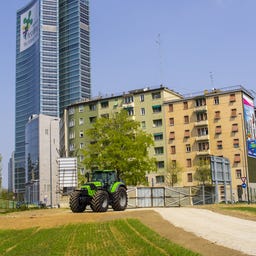
In the modern Palazzo Lombardia, the seat of the Regional Council of Lombardy, you will find Milan's architectural highlight of the early 21st century. The building complex, designed by Pei Cobb Freed & Partners, impresses not only with its main tower, which stands 161.3 meters tall, but also with Europe’s largest covered square, the Piazza Città di Lombardia.
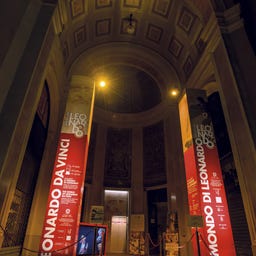
In the heart of Milan, right by the Piazza della Scala, you’ll discover a fascinating museum dedicated to the universal genius Leonardo da Vinci. The Leonardo3 Museum, which opened in 2013, brings his inventions to life with over 200 interactive 3D models and features all 20 known paintings of the master on interactive display walls as a special highlight.

On Via Gattamelata in Milan, you discover the historic site of the first Alfa Romeo factory, which embodied the industrial greatness of the city from 1906 to 1986. What started as a production facility for Alexandre Darracq evolved in 1910 into A.L.F.A. (Anonima Lombarda Fabbrica Automobili) and shaped Italian automotive history for decades.
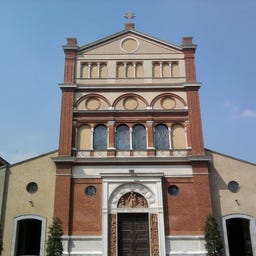
The Chiesa di Santa Maria alla Fontana was established in the early 16th century due to a spring believed to have healing properties, particularly for joint ailments. The building, designed by Giovanni Antonio Amadeo, was funded in 1507 by Carlo II d'Amboise, who had experienced healing himself from the spring water.
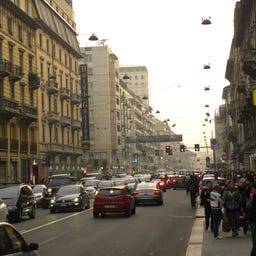
A real shopper’s paradise, Corso Buenos Aires offers one and a half kilometres of storefronts, with shops for all tastes and all budgets: sophisticated boutiques, mixed with trendy stores offering all types of merchandise and numerous bars for a quick snack. Its side streets abound with restaurants, many of which are ethnic. A Saturday afternoon favourite with Milanese shoppers of all ages.
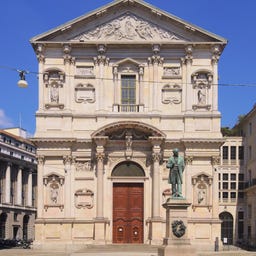
The Chiesa di San Fedele is an impressive Jesuit church from the 16th century, considered a prime example of sacred architecture from the Counter-Reformation. Located between the Palazzo Marino and the Galleria Vittorio Emanuele II, the building designed by Pellegrino Tibaldi captivates with its elegant interior featuring distinctive color effects and monumental Corinthian columns.

At the ADI Design Museum in Milan's Porta Volta district, you can explore the permanent exhibition of the historical collection of the prestigious Compasso d'Oro, Italy's most important design award. The museum, which opened in 2021, was created by transforming a former Enel site and is the result of an exciting collaboration between the city of Milan and the ADI Design Association.
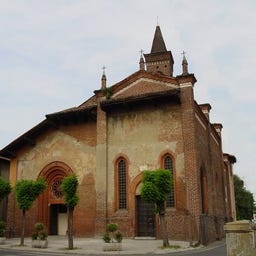
At the picturesque Naviglio Grande in Milan, you will find the fascinating church complex of Chiesa di San Cristoforo, which spans two different eras. The older Romanesque church was remodeled in the 13th century and impresses with its Gothic portal featuring rose windows, while the younger "Ducal Chapel" was built by Gian Galeazzo Visconti after a devastating plague in 1399.
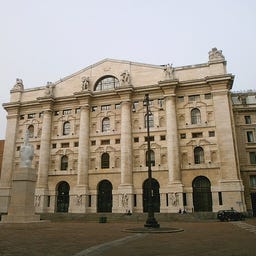
On the Piazza degli Affari, the heart of the Italian financial world, historical heritage meets modern provocation. Where the Roman theater once entertained up to 9,000 spectators in the 1st century BC, today stands the Palazzo designed by architect Paolo Mezzanotte, completed in 1932, housing the historic Milan Stock Exchange.
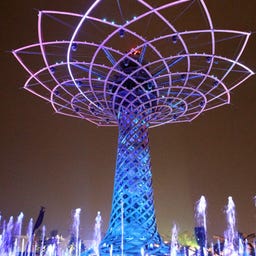
The 37-meter tall "Albero della Vita" (Tree of Life) is the impressive landmark of Expo 2015 in Milan, designed by Marco Balich and built in just four months using steel and wood. Its distinctive design combines influences from the Italian Renaissance and is inspired by the historical pavement of the Piazza del Campidoglio in Rome from the 16th century.
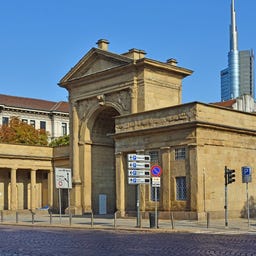
The Porta Nuova, one of the six historic city gates of Milan, stands today as an impressive neoclassical arch made of yellow sandstone. Designed by Giuseppe Zanoia between 1810 and 1813, this structure replaced an older Spanish gate from the 16th century and marked the northern entrance to the city.
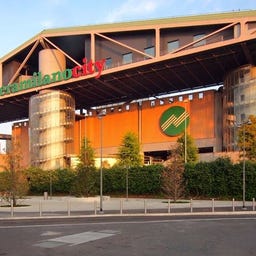
In the heart of the Milan Portello district, you’ll find the Fieramilanocity, a modern exhibition and conference center with an impressive history dating back to the 1906 World’s Fair. Designed by Mario Bellini, the complex stands out with its distinctive architecture, featuring a glass spiral staircase and the iconic "Comet" roof of the conference center.
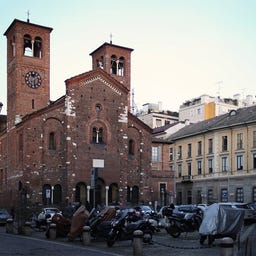
Piazza San Sepolcro in the heart of Milan has a rich history that dates back to Roman times, when it was the site of the city's forum and the intersection of Cardo and Decumanus. The church that gives the square its name, San Sepolcro, was built in 1030 and still defines the historic square today.
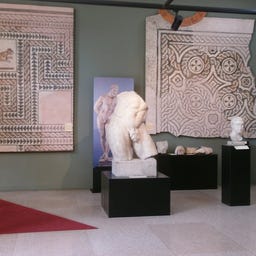
In the former Monastero maggiore di San Maurizio, you discover one of Milan's most significant archaeological museums, with a history dating back to 1799 when the painter Giuseppe Bossi began collecting the first artifacts. Officially established in 1862, the museum now houses impressive collections of Greek, Etruscan, and Roman art, as well as a large model of ancient Mediolanum.
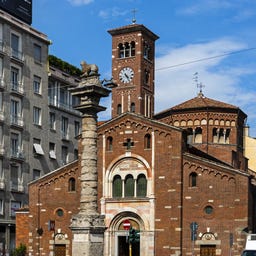
The Basilica di San Babila in the heart of Milan has a rich history that dates back to the late 11th century. The current structure, with its distinctive neo-Romanesque facade and three mosaic-adorned portals, is the result of extensive renovations around 1900.
